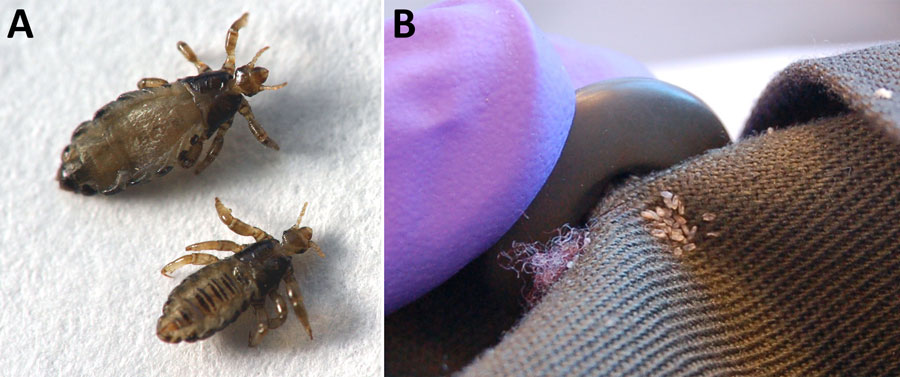Volume 30, Number 12—December 2024
Perspective
Homelessness and Organ Donor–Derived Bartonella quintana Infection
Figure 1

Figure 1. Dimorphous Pediculus humanus humanus (human body louse). A) The female adult (top) is larger than the male adult (bottom). B) Eggs, also known as nits, observed behind a coat button. Photographs courtesy of Denise Bonilla and the California Department of Public Health.
Page created: October 25, 2024
Page updated: November 26, 2024
Page reviewed: November 26, 2024
The conclusions, findings, and opinions expressed by authors contributing to this journal do not necessarily reflect the official position of the U.S. Department of Health and Human Services, the Public Health Service, the Centers for Disease Control and Prevention, or the authors' affiliated institutions. Use of trade names is for identification only and does not imply endorsement by any of the groups named above.